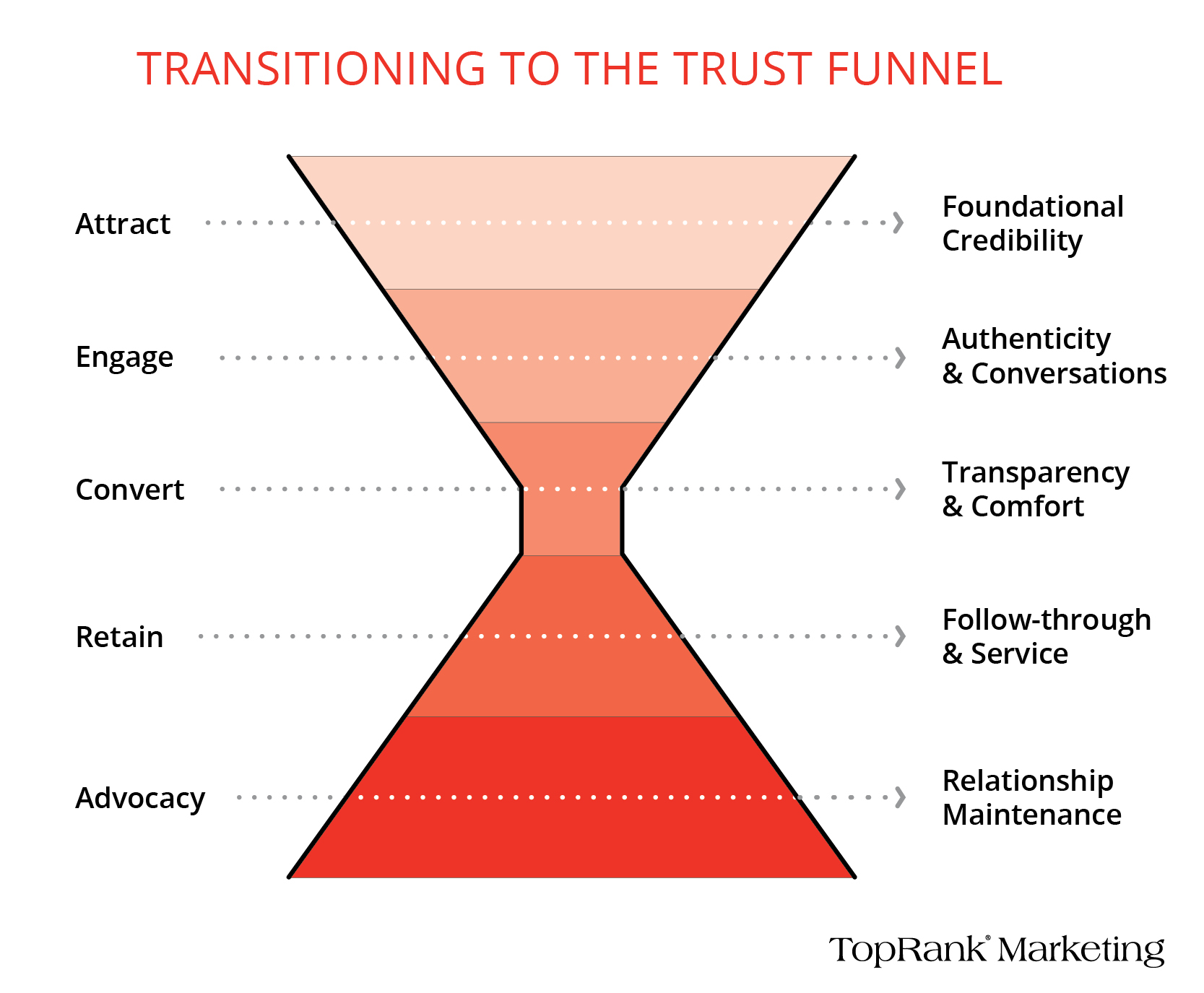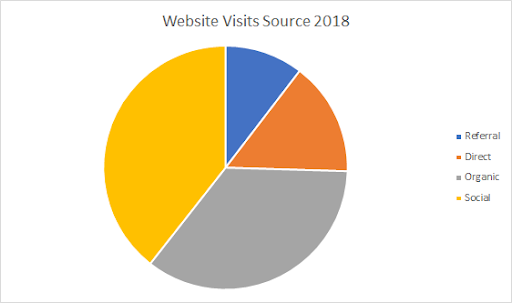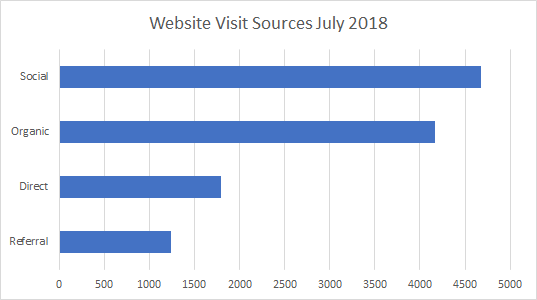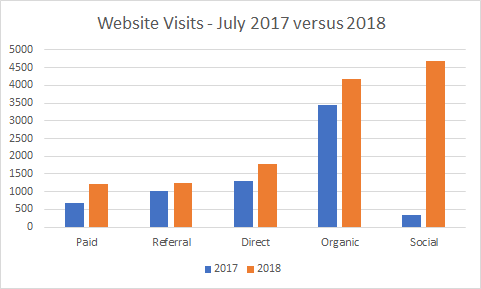The post #CMWorld 2019 Interview: Andrew Davis on Showing, Not Telling appeared first on Online Marketing Blog - TopRank®.
Article Source: http://bathseoexpert.blogspot.com/2019/07/cmworld-2019-interview-andrew-davis-on.html

 I can’t believe I got fired from the calendar factory. All I did was take a day off! Opening today’s post up with a bit of levity felt fitting, because calendars can cause much anxiety. They bring to mind deadlines, meticulous organization, and time crunches, which are often oppressive realities for marketers with a million things on their plates. But the truth is that you’re likely to encounter much more dread if you don’t house your content planning within a documented and strategic editorial calendar for blogging. Building out a set schedule (with a bit of flexibility) ultimately makes your life easier because it provides a guiding light, and ensures your content strategy remains cohesive and oriented around your objectives. In other words, editorial calendars are no joke. Here’s how you can construct one that seriously drives your company’s blog (or any other content initiative) forward.
I can’t believe I got fired from the calendar factory. All I did was take a day off! Opening today’s post up with a bit of levity felt fitting, because calendars can cause much anxiety. They bring to mind deadlines, meticulous organization, and time crunches, which are often oppressive realities for marketers with a million things on their plates. But the truth is that you’re likely to encounter much more dread if you don’t house your content planning within a documented and strategic editorial calendar for blogging. Building out a set schedule (with a bit of flexibility) ultimately makes your life easier because it provides a guiding light, and ensures your content strategy remains cohesive and oriented around your objectives. In other words, editorial calendars are no joke. Here’s how you can construct one that seriously drives your company’s blog (or any other content initiative) forward.
The post Content Marketing Planning: How to Build Your Editorial Calendar appeared first on Online Marketing Blog - TopRank®.

 Few things in this world are as delicious as a corner piece of lasagna. For starters, the top layer of cheese is both gooey and crispy. The tomato sauce is sweet yet peppery. The meat? It’s flavorful and hearty. And don’t get me started on the ricotta and mozzarella layers—my favorite by far. via GIPHY Lasagna is the perfect dish. And its perfection is not just defined by quality ingredients, but how each ingredient is artfully layered together to bring satisfaction with each and every bite. That’s where the magic happens. Cooking a delectable lasagna to perfection is not unlike crafting an integrated approach to content marketing. On their own, your tactics may whet your audience’s appetite, but don’t pack the tasty punch of working together to make a lasting impact or drive savory results. Paid, SEO, content, social, influencer, design—all need to work in tandem to ensure your marketing objectives are met. What are the essential layers for a scrumptiously integrated content marketing lasagna? Here’s a little cooking demonstration.
Few things in this world are as delicious as a corner piece of lasagna. For starters, the top layer of cheese is both gooey and crispy. The tomato sauce is sweet yet peppery. The meat? It’s flavorful and hearty. And don’t get me started on the ricotta and mozzarella layers—my favorite by far. via GIPHY Lasagna is the perfect dish. And its perfection is not just defined by quality ingredients, but how each ingredient is artfully layered together to bring satisfaction with each and every bite. That’s where the magic happens. Cooking a delectable lasagna to perfection is not unlike crafting an integrated approach to content marketing. On their own, your tactics may whet your audience’s appetite, but don’t pack the tasty punch of working together to make a lasting impact or drive savory results. Paid, SEO, content, social, influencer, design—all need to work in tandem to ensure your marketing objectives are met. What are the essential layers for a scrumptiously integrated content marketing lasagna? Here’s a little cooking demonstration.
The post Cooked to Strategic Perfection: The Layers of a Deliciously Integrated Content Marketing Lasagna appeared first on Online Marketing Blog - TopRank®.

 In my experience, most marketers fancy themselves as lifelong learners, taking pride in innovating their work and skill set to maximize their impact. We keep tabs on emerging trends, tactics, and tools. We follow industry leaders for their insight. We consult our internal teams and external partners for advice. But there may be one specialty group we don’t look to for inspiration enough: The kids in our lives. As a parent of two adorable monsters who are growing up way to fast, I’ve been reflecting a lot on how far they’ve come. Of course, I’ve realized that I’ve come far too, as both a parent and a marketer. And I’d wager that most of us have kids in our lives who have the potential to teach and remind us of some important things that can make us better humans and better at what we do. So, what marketing lessons can the little ones in our lives pass on? Here are a few that have been illuminated for me recently.
In my experience, most marketers fancy themselves as lifelong learners, taking pride in innovating their work and skill set to maximize their impact. We keep tabs on emerging trends, tactics, and tools. We follow industry leaders for their insight. We consult our internal teams and external partners for advice. But there may be one specialty group we don’t look to for inspiration enough: The kids in our lives. As a parent of two adorable monsters who are growing up way to fast, I’ve been reflecting a lot on how far they’ve come. Of course, I’ve realized that I’ve come far too, as both a parent and a marketer. And I’d wager that most of us have kids in our lives who have the potential to teach and remind us of some important things that can make us better humans and better at what we do. So, what marketing lessons can the little ones in our lives pass on? Here are a few that have been illuminated for me recently.
The post What Can Marketers Learn From the Children In Our Lives? Plenty appeared first on Online Marketing Blog - TopRank®.

If you’re going to be managing an SEO campaign, it’s best you have some formal training in the art of search engine optimization.
While it’s not necessary to major specifically in SEO at a university, you should at least be seeking some higher education, specifically digital marketing certification courses and advanced training classes.
Careers in the SEO industry can be lucrative, and the industry has a demand for experienced professionals who are trained in the subtle content tweaks that it takes to raise a website up from obscurity into the world of page one visibility.
But why do you need to take a course in the first place? Can’t you just learn on the job? Is it truly important to invest in SEO training? And if you do want to train, what are some of the best free and paid courses that you can take to further your knowledge?
Much like any technical profession, SEO requires a lot of training. It is no longer the new kid on the marketing block (like social media), and it has become essential for content marketers to have a working knowledge of SEO and how it works.
That’s because SEO is a complicated and evolving process which combines elements of content writing with web design to create a layered and multi-faceted campaign that must be constantly managed and nurtured.
If you’re looking to have a career in the SEO industry, you need to develop an intense focus on Google’s search algorithm and how it changes over time. Google is constantly shifting its parameters, so as an SEO professional, it’s up to you to adapt the content of your clients to ensure that you’re doing everything you can to maintain and enrich their ranking.
You have to understand how Google judges sites and how to stay ahead of changes the company makes.
This is true whether you’re new yourself or you have a new team member joining your company who needs more training.
To that end, training courses are perfect for beginners to learn practical knowledge and test themselves before being thrust into a position they’re not prepared for.
Failing to provide accurate training for an SEO specialist could lead to major mistakes being made which negatively impact the overall campaign. Unfortunately, the penalty for such an occurrence is usually that the person is terminated.
Remember, every job involves extensive training whether you’re a plumber, WordPress developer, or a Wall Street executive. Why should a process that has become the backbone of the marketing industry be any different?
When looking at the world of search engine optimization, it’s easy to question why you should have to invest your own money into training classes. When you break down the numbers, you’ll find that paying into an SEO future can be a very smart investment based solely on your return.
SEO courses vary in costs (more on that in a moment.) However, most of them are either free or cost up to $1,000. While the latter figure might make your legs wobble, it’s important to look at the industry as a whole before making a snap judgment.
SEO Specialists are in high demand in today’s market. The industry is booming, with a 43% increase in SEO jobs from 2017 to 2018. The better the education you have, the more likely you are to land a high paying SEO job.
How high paying?
The average base salary of an SEO specialist is reported by Glassdoor to be $65,200 per year. That means if you get a good job in the SEO industry, you can make your initial coursework investment back in less than one week.
Now that you understand why you should be taking a training course to enrich your SEO career journey, it’s time to figure out what kind of courses are out there.
These courses vary in price, starting at no cost whatsoever all the way up to expensive university classes. We will go through each of these chosen educational pathways to ensure that you are making a decision that fits your needs and your budget.
Moz’s SEO training course is filled with a lot of advanced knowledge. It is primarily a beginner course offering two paid plans.
The first and more expensive option is a full SEO fundamentals certification course priced at $599. It provides foundational knowledge which prepares students for common SEO projects. It is led by instructors. These lessons focus on keyword research, page optimization, link building, and reporting.
As far as the workload and time commitment, this course features six hours of video content broken into five lessons, along with quizzes and a final exam.
You can easily tout your successful completion of Moz’s SEO course because you will receive a certificate of completion at the end of your work. This makes it far easier to show a potential employer and makes a great resume attachment.
The other option is priced at $199 and it focuses on local SEO training. It focuses on six components of local SEO strategy, teaching students how to prioritize optimizations on a local level. It does this by covering how to audit web pages and business listings in order to be listed on map results. The course provides a Local SEO checklist that can be tailored to future clients on an individual basis.
The course is self paced, meaning students have the ability to work at their own speed. All purchases grant access to the video course and materials for a period of one year.
The reviews for Moz’s SEO Training Course are mostly positive.
As for accessibility, Moz’s course can be completed on mobile platforms, including iPhone, iPad, or any Android device.
ClickMinded is a premium SEO course that is priced at $487. The difference between ClickMinded and many of the free services on this list becomes apparent when you look at the large amount of content that it offers.
ClickMinded’s SEO course includes more than five hours of content split between 66 different lectures. That’s a lot of course time, making for a complete educational experience.
On top of explaining the basics of SEO to you, ClickMinded will also walk you through the use of 14 different SEO tools.
There are almost 3,000 students enrolled in the program, and it gets great reviews all across the board. ClickMinded fits in well with a busy schedule as it is a self-paced course. There is no need to worry about wasting your money as the course comes with a 30-day money back guarantee.
That means an SEO beginner who starts the course work and then determines that this is not the career path for them can opt out and receive a full refund within the first 30 days.
Like most of the courses on this list, you can get a certificate of completion at the end.
MarketMotive’s SEO Certification Training program entails 25 Hours of learning. It also features educational materials including downloadable workbooks. What’s more, the course is updated on a quarterly basis to reflect the current state of the SEO industry, so you’re not getting fed any outdated information.
There are periodic quizzes designed to test your knowledge throughout the course, and it comes with a seven-day money back guarantee.
Speaking of money, MarketMotive’s course comes in two differently priced tiers. The self-paced version of this course is offered at $599. You can also take a live online classroom version of the training program at $999.
Another great feature which gives you a lot of bang for your buck is unlimited support in a responsive “ask the instructor” format. This program ensures that you’ll never sit there confused with no one to help you.
At the end of your training, you will receive a certificate of completion to prove that you took this course.
This is the only program on this list that is offered from an actual university. This is a certificate program offered through the University of San Francisco, and as such, it is the most expensive item on this list at $1,980 for one course.
The course features eight different SEO related topics, each one composed of six different lectures, meaning you’re getting a lot of content for such a hefty price tag.
Coursework for this program also includes preparation for the Google Ads Certification exam, which is a huge deal in the marketing world. Receiving Adwords certification is a massive feather in your cap and makes you more appealing to businesses, not only to manage their SEO efforts but also to run Google Ads on a pay-per-click basis.
Online Marketing Institute offers an SEO Certification program that is composed of five different parts.
On top of coursework, a final Exam is available after all of the classes have been completed. Your knowledge is constantly being tested in this program with a short quiz which follows each lesson.

This is another certificate program, providing proof of completion at the end.
The online marketing institute offers two different ways that you can pay for this service. The first is a monthly fee of $67, or if you have the money upfront, you can pay a lower cost of $859 one time for the entire course. This is perfect for students who don’t have as much disposable income on hand, allowing them to pay as they go until the course is completed.
While you are left to your own devices to complete the course, there is a time limit in place. You are given a period of six months to complete all of the classes and the final exam immediately following your enrollment.
It should also be noted that these classes all vary in terms of timing. Each class is somewhere between 20 and 70 minutes in length.
This is a free SEO guide offered up by Google. Note that it is described as a guide and not a course. That’s because this is an educational chapter-based tutorial and not an actual course with classroom work.
Google gives you 12 “chapters” to read through in order to enrich your knowledge of the SEO process and how it works.
They go into detail explaining the process offering a very basic take on what SEO is and how you can get started on optimizing content.
It should also be noted that this tutorial covers Google only, so if you’re looking to optimize content for Amazon, Apple, Bing, or Yahoo, you’ll have to look elsewhere.
As this is not a course, there is no certificate of completion offered at the end and no testing. The entire tutorial can be completed in one sitting. While this is not the best route for forging an education in the SEO field, it is a good starting point. What’s more, you’re being educated by Google itself, which is huge.
It is highly recommended that SEO specialists review this content, even as an extra boost to their education following the completion of a certification program.
QuickSprout is another tutorial, not an actual certification course. As such, there is no completion certificate at the end of it.
It is a free tutorial with Neil Patel serving as one of the authors. This is a good continuation tutorial for people who are ready to move beyond the basics of SEO. It covers a lot of the more advanced topics like link building and aspects of technical SEO.
The QuickSprout Tutorial features nine different chapters that are written in a very conversational and easy to understand tone. It is highly recommended for anyone looking to deepen their knowledge following a certification program.
Technical SEO is becoming more important as websites become more advanced. Link building has always been one of the most complicated aspects of modern SEO so its best to get as much training and information on it as you can.
Industry experts all agree that a career in SEO is a positive move for young professionals. To better your chances at landing a lucrative SEO career, you should invest in a certification course or, at the very least, consider going through some of the free tutorials mentioned in this article.
Doing so could be the first step on your journey to a fulfilling career that is in demand.
The post SEO Courses: The Best SEO Training Options in 2019 (Free and Paid) appeared first on HigherVisibility.

 In June the 2019 Cannes Lions International Festival of Creativity brought together some of the world’s savviest B2B marketers, brands, and other creative professionals. From Nike, IKEA, and Visa to Tommy Hilfiger, Microsoft and Target, strong brands and the marketers behind them were involved at Cannes, and the trends they gathered to explore will play a part in shaping how B2B marketers focus their efforts in the months and years ahead. Here’s a run-down of some of the top B2B marketing and other revelations from this year’s Cannes, and what they’ll mean for your business in 2020 and beyond.
In June the 2019 Cannes Lions International Festival of Creativity brought together some of the world’s savviest B2B marketers, brands, and other creative professionals. From Nike, IKEA, and Visa to Tommy Hilfiger, Microsoft and Target, strong brands and the marketers behind them were involved at Cannes, and the trends they gathered to explore will play a part in shaping how B2B marketers focus their efforts in the months and years ahead. Here’s a run-down of some of the top B2B marketing and other revelations from this year’s Cannes, and what they’ll mean for your business in 2020 and beyond.
 One running theme at Cannes this year was centered around being mindful of your brand’s purpose, and how it will be especially important when it comes time to meet your audience’s needs and make the greatest impact. Being a change-maker brand comes from honing in on consumer desires, so listen to the signals coming from the online platforms where your customers and potential clients spend the majority of their time. Don’t entirely eschew machine learning when it comes to your data, but build brand trust by ensuring that appropriate and responsible humans have data oversight. Look to feed off competitive momentum and focus conversations and cultural discussions using creativity, and keep it sincere when it comes to brand activism, while avoiding all hints of opportunism, many at Cannes urged. Brand engagement, especially through influencer marketing, has been the focus of several recent articles we've published, including these:
One running theme at Cannes this year was centered around being mindful of your brand’s purpose, and how it will be especially important when it comes time to meet your audience’s needs and make the greatest impact. Being a change-maker brand comes from honing in on consumer desires, so listen to the signals coming from the online platforms where your customers and potential clients spend the majority of their time. Don’t entirely eschew machine learning when it comes to your data, but build brand trust by ensuring that appropriate and responsible humans have data oversight. Look to feed off competitive momentum and focus conversations and cultural discussions using creativity, and keep it sincere when it comes to brand activism, while avoiding all hints of opportunism, many at Cannes urged. Brand engagement, especially through influencer marketing, has been the focus of several recent articles we've published, including these:
 Dig in and embrace the sometimes-messy digital world where your potential customers interact, by communicating with them and taking the time to learn about their lives through what they’re posting online, because cold and impersonal data can only get you so far in the customer journey. These raw and real connections can unite and forge new relationships in ways that polished marketing campaigns sometimes just can’t, and some of the winners at Cannes showed examples of building these types of connections. Build strong brand value while also allowing customers to take the wheel, nurture the connections your brand makes, and don’t be afraid to build strong creative partnerships in your efforts. Valuing the participation of consumers while also standing by your brand’s values were among the trends explored during Cannes this year. Search taking place from smart speakers and other connected voice-assisted is poised to boom in the coming years, and podcasting is expanding to offer new ways to integrate brand messaging. Strive to build a seamless voice search approach that meshes with the values and messaging of your brand or that of your client, as sound is the newest frontier for B2B marketers. We're written about smart search recently, including in these helpful articles:
Dig in and embrace the sometimes-messy digital world where your potential customers interact, by communicating with them and taking the time to learn about their lives through what they’re posting online, because cold and impersonal data can only get you so far in the customer journey. These raw and real connections can unite and forge new relationships in ways that polished marketing campaigns sometimes just can’t, and some of the winners at Cannes showed examples of building these types of connections. Build strong brand value while also allowing customers to take the wheel, nurture the connections your brand makes, and don’t be afraid to build strong creative partnerships in your efforts. Valuing the participation of consumers while also standing by your brand’s values were among the trends explored during Cannes this year. Search taking place from smart speakers and other connected voice-assisted is poised to boom in the coming years, and podcasting is expanding to offer new ways to integrate brand messaging. Strive to build a seamless voice search approach that meshes with the values and messaging of your brand or that of your client, as sound is the newest frontier for B2B marketers. We're written about smart search recently, including in these helpful articles:
 Cannes made efforts to find and highlight the areas in marketing where diversity continues to be lacking, led by people over 50 and those who are differently-abled, and spent considerable time exploring how setting aside fear and risk can lead to huge economic and strategic opportunities. Going beyond hiring, diversity should move towards being more of a core piece of a brand’s values, some of those gathered at Cannes noted. Adding diversity key performance indicators (KPIs) to existing performance metrics would go a long way towards making inclusiveness an important part of opportunity pipelines, and ultimately bottom lines, it was noted during Cannes.
Cannes made efforts to find and highlight the areas in marketing where diversity continues to be lacking, led by people over 50 and those who are differently-abled, and spent considerable time exploring how setting aside fear and risk can lead to huge economic and strategic opportunities. Going beyond hiring, diversity should move towards being more of a core piece of a brand’s values, some of those gathered at Cannes noted. Adding diversity key performance indicators (KPIs) to existing performance metrics would go a long way towards making inclusiveness an important part of opportunity pipelines, and ultimately bottom lines, it was noted during Cannes.
 Connections coming from unexpected places and new experiences are poised to change how B2B marketers expand beyond traditional sources, and an emphasis on the power of creativity to strengthen organizations was made at Cannes. Brands and how they reflect culture at large will become more of a joint initiative at successful firms and in strong marketing efforts, especially in creative campaigns. Cannes showed that creativity will likely thrive in the coming year, even more-so when it’s increasingly expressed as a team effort, done in what some gathered for the week called real-time branding, with all involved having a creative stake in new marketing initiatives. Having a relevant and flexible B2B marketing strategy, and building innovative creative methods whether working solo or with an agency, were also take-aways from Cannes this year. We've explored both long-term planning and the question of when is the right time to partner with an agency, in recent articles such as these:
Connections coming from unexpected places and new experiences are poised to change how B2B marketers expand beyond traditional sources, and an emphasis on the power of creativity to strengthen organizations was made at Cannes. Brands and how they reflect culture at large will become more of a joint initiative at successful firms and in strong marketing efforts, especially in creative campaigns. Cannes showed that creativity will likely thrive in the coming year, even more-so when it’s increasingly expressed as a team effort, done in what some gathered for the week called real-time branding, with all involved having a creative stake in new marketing initiatives. Having a relevant and flexible B2B marketing strategy, and building innovative creative methods whether working solo or with an agency, were also take-aways from Cannes this year. We've explored both long-term planning and the question of when is the right time to partner with an agency, in recent articles such as these:
 At Cannes a more transformational flavor of storytelling was seen as coming down the pike, one that will help evolve the narrative with more levels of both client and customer experience, all combining to bring better communication to consumers. Rapidly-expanding digital technologies and more data than ever present challenges, but also massive opportunities, especially when the two combine to help creative storytelling efforts that help drive B2B marketing efforts. Creating compelling narratives and delivering them in new and relevant ways will play a factor in marketing in 2020 and beyond, and firms utilizing solely technology to overcome marketing barriers may be left behind. Learning to better recognize the people behind the data and the numbers was also seen as a key trend at Cannes, along with greater incorporation of empathy and intuition in marketing processes. Neuroaesthetics and an evolving method of storytelling that is always-on will expand on traditional forms of narratives that have been largely limited to a beginning, middle, and end. Micro-storytelling efforts will also help brands shows that they are listening, and encourage consumers to create and share their own stories. A few of our helpful looks at storytelling in marketing are these:
At Cannes a more transformational flavor of storytelling was seen as coming down the pike, one that will help evolve the narrative with more levels of both client and customer experience, all combining to bring better communication to consumers. Rapidly-expanding digital technologies and more data than ever present challenges, but also massive opportunities, especially when the two combine to help creative storytelling efforts that help drive B2B marketing efforts. Creating compelling narratives and delivering them in new and relevant ways will play a factor in marketing in 2020 and beyond, and firms utilizing solely technology to overcome marketing barriers may be left behind. Learning to better recognize the people behind the data and the numbers was also seen as a key trend at Cannes, along with greater incorporation of empathy and intuition in marketing processes. Neuroaesthetics and an evolving method of storytelling that is always-on will expand on traditional forms of narratives that have been largely limited to a beginning, middle, and end. Micro-storytelling efforts will also help brands shows that they are listening, and encourage consumers to create and share their own stories. A few of our helpful looks at storytelling in marketing are these:
 We’ve focused more than ever on trust in marketing over the past year at TopRank Marketing, with pieces such as these:
We’ve focused more than ever on trust in marketing over the past year at TopRank Marketing, with pieces such as these:
The post 6 Cannes Revelations About B2B Marketing in 2020 appeared first on Online Marketing Blog - TopRank®.

 The marketing funnel as we know it is gone. Or at least it needs to be, if we as marketers want to move toward a truly customer-centric operation. In this new installment of our Trust Factors series, we'll review the conventional models for customer acquisition and explain why they're going out of style. Then, we'll present an updated version, geared toward long-term sustainable growth.
The marketing funnel as we know it is gone. Or at least it needs to be, if we as marketers want to move toward a truly customer-centric operation. In this new installment of our Trust Factors series, we'll review the conventional models for customer acquisition and explain why they're going out of style. Then, we'll present an updated version, geared toward long-term sustainable growth.
 The trust funnel is essentially aimed at optimizing each of the first three stages to support the last two by inspiring loyalty and cultivating long-term relationships throughout. Why is this important? Because successfully mastering this process is the key to running an efficient and sustainable business. Consider that increasing customer retention rates by 5% can increase profits by 25%-95%. Meanwhile, studies show that customer-referred leads are far more likely to convert, and deliver considerably higher lifetime value on average. In short, an effective customer retention and advocacy model helps your marketing become more self-sufficient. Trust unlocks this ideal.
The trust funnel is essentially aimed at optimizing each of the first three stages to support the last two by inspiring loyalty and cultivating long-term relationships throughout. Why is this important? Because successfully mastering this process is the key to running an efficient and sustainable business. Consider that increasing customer retention rates by 5% can increase profits by 25%-95%. Meanwhile, studies show that customer-referred leads are far more likely to convert, and deliver considerably higher lifetime value on average. In short, an effective customer retention and advocacy model helps your marketing become more self-sufficient. Trust unlocks this ideal.
The post The B2B Marketing Funnel is Dead: Say Hello to the Trust Funnel appeared first on Online Marketing Blog - TopRank®.

 We’ve all been there. We’re five minutes into (what we thought would be) a riveting, data-driven presentation, yet a quick scan of the room reveals the audience is staring blankly at our data tables as we drone on. Or worse, someone asks a pointed question about what they do or don’t see and the discussion goes completely of course. Yikes. Perhaps the best advice I ever received in this regard was so simple yet incredibly smart: “Try it as a line graph.” I had presented a data-backed presentation and robust recommended next steps, but whether it was boredom or data suspicion that crept in, I failed to make my case. After the weeks I spent looking at a spreadsheet, I took that visionary advice. When the day came to remake my case, that line graph immediately won my critics over. When done thoughtfully, data visualizations have the power to change perspectives, far more quickly than a spreadsheet or bullet points on a slide. Data visualization allows us to take complex or even simple data sets, and present them in a way that allows us to see context, make comparisons, and enable decision-making. The good news? Giving your data a visual identity is easier than you think.
We’ve all been there. We’re five minutes into (what we thought would be) a riveting, data-driven presentation, yet a quick scan of the room reveals the audience is staring blankly at our data tables as we drone on. Or worse, someone asks a pointed question about what they do or don’t see and the discussion goes completely of course. Yikes. Perhaps the best advice I ever received in this regard was so simple yet incredibly smart: “Try it as a line graph.” I had presented a data-backed presentation and robust recommended next steps, but whether it was boredom or data suspicion that crept in, I failed to make my case. After the weeks I spent looking at a spreadsheet, I took that visionary advice. When the day came to remake my case, that line graph immediately won my critics over. When done thoughtfully, data visualizations have the power to change perspectives, far more quickly than a spreadsheet or bullet points on a slide. Data visualization allows us to take complex or even simple data sets, and present them in a way that allows us to see context, make comparisons, and enable decision-making. The good news? Giving your data a visual identity is easier than you think.
 Whoa! 2018 outperformed 2017 by quite a bit overall. However, 2017 traffic was on the up and up, and that momentum slowed in 2018. With the exception of a mid-year spike, 2018 traffic was flat, and dipped below year-over-year totals by the end of the year.
Whoa! 2018 outperformed 2017 by quite a bit overall. However, 2017 traffic was on the up and up, and that momentum slowed in 2018. With the exception of a mid-year spike, 2018 traffic was flat, and dipped below year-over-year totals by the end of the year.  The beauty here? As we prepare to deliver the data to our audience, we can draw some pretty important conclusions at a glance, helping us quickly arrive at what we need to find out next: What caused that big spike in July 2018? Is it an outlier or did we have an effective campaign running? What did the tactical mix look like throughout 2017? What were the top pages contributing to steady growth? Did we make major changes at the beginning of 2018? This not only helps us dig deeper into our data to understand trends and opportunities, but also prepare us to craft a narrative and answer the questions our bosses, colleagues, or clients will undoubtedly have about performance. After all, flashing a spreadsheet and then telling someone traffic is up year-over-year overall but flat month-over-month for the current year is not going to deliver much wow.
The beauty here? As we prepare to deliver the data to our audience, we can draw some pretty important conclusions at a glance, helping us quickly arrive at what we need to find out next: What caused that big spike in July 2018? Is it an outlier or did we have an effective campaign running? What did the tactical mix look like throughout 2017? What were the top pages contributing to steady growth? Did we make major changes at the beginning of 2018? This not only helps us dig deeper into our data to understand trends and opportunities, but also prepare us to craft a narrative and answer the questions our bosses, colleagues, or clients will undoubtedly have about performance. After all, flashing a spreadsheet and then telling someone traffic is up year-over-year overall but flat month-over-month for the current year is not going to deliver much wow.

 Color: Incorporating color to help tell your story can be very powerful, but can also lend confusion. A few practical things to consider:
Color: Incorporating color to help tell your story can be very powerful, but can also lend confusion. A few practical things to consider:
 Finally, looking at the same data as in our previous visualizations. This example dives into July 2018, with the added context of 2017. In this graph, we can easily see a spike in social caused our July 2018 increase. Now, we can add a call out to shout out to testing a paid social campaign or a contest that was running at that time.
Finally, looking at the same data as in our previous visualizations. This example dives into July 2018, with the added context of 2017. In this graph, we can easily see a spike in social caused our July 2018 increase. Now, we can add a call out to shout out to testing a paid social campaign or a contest that was running at that time.
The post How to Power Marketing Presentations With Data Visualization & Win Over Your Audience appeared first on Online Marketing Blog - TopRank®.